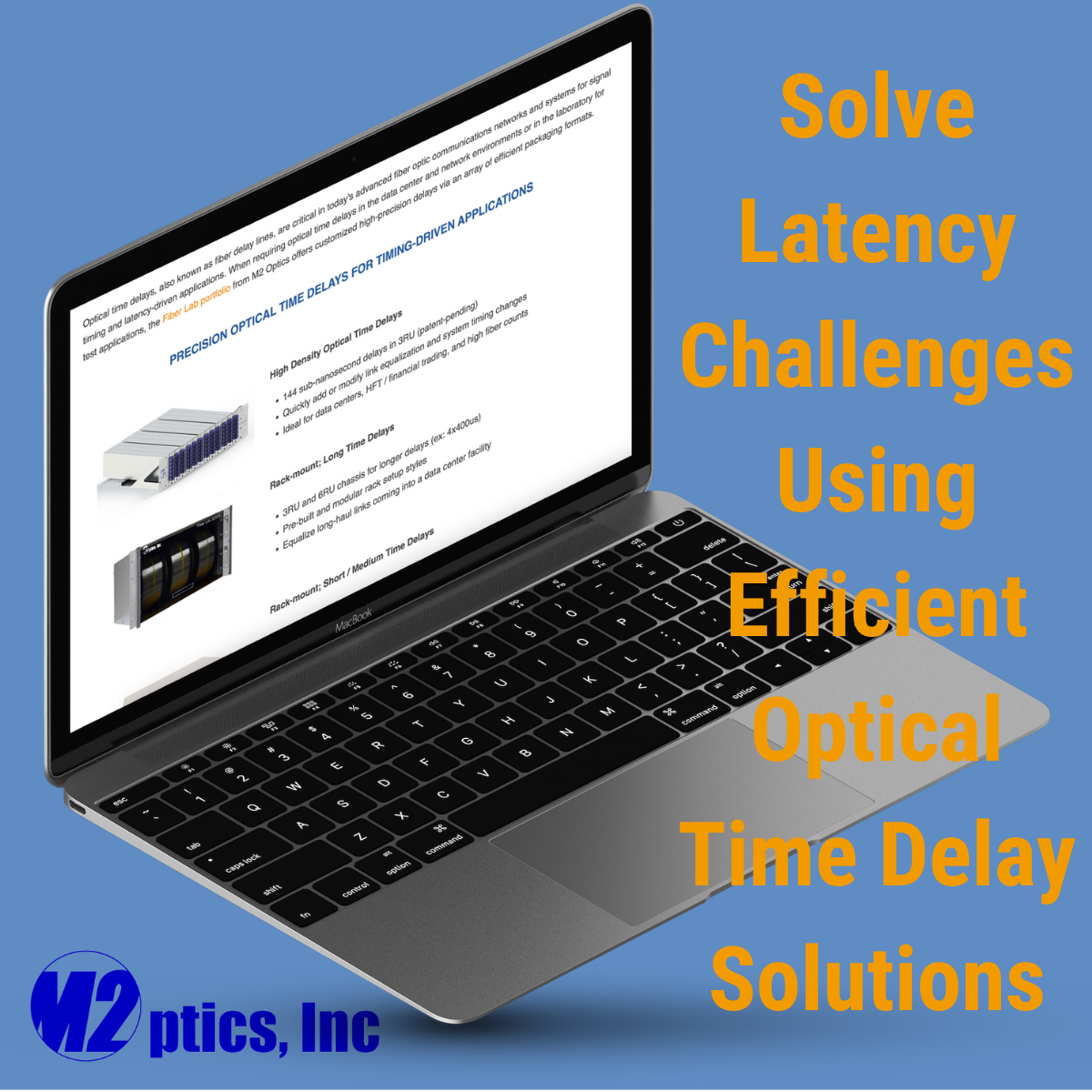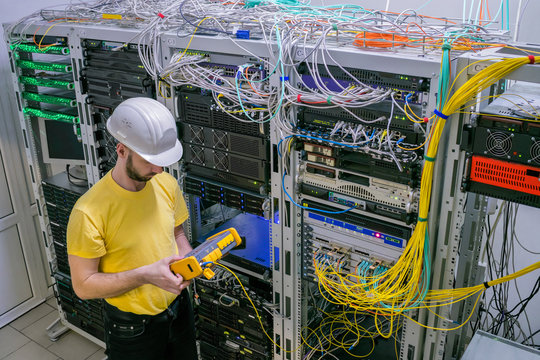Latency is a critical performance factor in communications networks as it is the time it takes for data to travel from one point to another. As one might expect, service providers commit a great deal of time and effort attempting to reduce latency across the entire network, to deliver data and content faster to consumers and businesses. While important in general, some applications like financial trading, streaming video, and defense/military communications prioritize latency reduction with the goal of achieving as close to real-time communications as possible.
Read More
Topics:
optical fiber,
latency,
optical time delays
Optical fiber serves as the primary medium for transmitting data in today's high-speed communications networks and latency, one of the most critical performance measurements, is the time it takes for a light signal to travel from one point to another. While there are numerous factors that contribute to this value like installed devices when looking at overall network latency, the time delay incurred during light transmission across the fiber itself, also known as fiber latency, is a significant component in the equation.
Read More
Topics:
optical fiber,
optical time delays,
calculate latency
With global connectivity and data consumption rising at an exponential rate every year, the need for robust, faster, and more reliable data transmission is at its peak. Supporting this demand, fiber optic technology is fundamental and critical to delivering high-speed communication services and supporting the modern economy.
Read More
Topics:
fiber optic testing,
otdr
When designing fiber optic communications equipment or architecting a network, engineers spend a great deal of time evaluating, selecting, and certifying equipment to match the project’s needs. During this process, deciding to utilize either off-the-shelf style products or customized style products for satisfying specific engineering or network goals is very important and can have major ramifications on the outcome of the project. This article will briefly review these two categories of fiber optic products as both have their place in fiber optic communications systems, then discuss how using customized products in specific instances can deliver greater ROI.
Read More
Topics:
fiber lab
What is the Dynamic Range of an OTDR?
When certifying or troubleshooting optical fibers in a network using an OTDR, the Dynamic Range is a key parameter of the device that determines the maximum length of the fiber that is observed during a test trace. In more technical terms, it is the distance between the point of the initial backscatter and the noise floor at the end of the fiber under test. The dynamic range value is measured and expressed in decibels (dB) and is essentially an analysis of power levels. OTDRs offering a larger dynamic range value can test longer lengths of fiber compared to those offering a smaller dynamic range value. Therefore, equating a dynamic range value with a fiber distance value is important when evaluating or specifying an OTDR for testing fibers in a network.
Calculating Dynamic Range
At the most basic level, the calculation relationship for equating a dynamic range value to a fiber distance includes three components:
Read More
Topics:
optical fiber,
otdr,
optical time delays
With the goal of helping fiber technicians, engineers, and telecom enthusiasts learn more about using and managing fiber, M2 offers several highly useful tools and resources for calculating fiber latency accurately, simulating fiber networks and technical optical fiber reference guides. There are several types of fibers and understanding more about them is extremely important for engineers working in the field of networking and communications. Designed by engineers for engineers, every solution and resource is geared to maximize value, benefit everyone, efficiency, and versatility to help you achieve your project goals.
Read More
Topics:
optical fiber,
fiber optic training,
Optical fiber market
Are you thinking about upgrading your fiber optic network? Will your existing optical fiber infrastructure support the devices and services you plan to run? Could your organization benefit from having updated information about your fiber performance and inventory? If you answered “yes” to any of these questions, fiber characterization testing will help you gather the necessary data.
Read More
Topics:
optical fiber,
fiber optic cable,
fiber characterization,
otdr testing service
.png?width=1024&name=Untitled%20design%20(2).png)
The global fiber optic cable market has been significantly growing in recent years to support the rising demand by businesses and consumers for internet-based communications and services. The COVID-19 pandemic accelerated this trend over the past few years, as network operators have been adding more gear and capacity to support remote work, cloud-based service, streaming video, IoT, and 5G wireless technology use. In 2022, some estimate the market is expected to grow by 35.1%, from $66.54 billion in 2021 to $89.91 billion. By 2026, the market could reach $227.54 billion at a 26.1% compound annual growth rate (CAGR), according to ReportLinker.
Read More
Topics:
optical fiber,
Optical fiber market
.png?width=1024&name=Untitled%20design%20(1).png)
Cloud computing is a trending technology driven by the concept of utilizing internet-based, managed IT resources instead of maintaining the hardware and software components locally or on-site. A cloud computing infrastructure essentially creates a virtual enterprise IT environment consisting of software-defined components and computing power, storage, and network capabilities. This virtual infrastructure does what a physical infrastructure does and more, as it helps reduce costs and complexity while optimizing and centralizing data storage, management, and processing.
Read More
Topics:
fiber optic testing,
optical fiber






.png?width=1024&name=Untitled%20design%20(2).png)
.png?width=1024&name=Untitled%20design%20(1).png)



